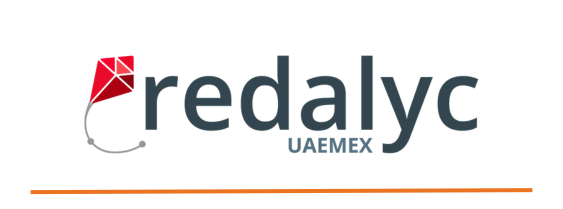Técnicas de inteligencia artificial aplicadas a la confección de horarios
DOI:
https://doi.org/10.26439/interfases2007.n002.163Keywords:
Inteligencia artificial, MetaheurísticaAbstract
El presente artículo describe la estrategia que utiliza técnicas de inteligencia artificial para confeccionar horarios de clase de una entidad académica, de manera automática, con calidad igual o superior a la de los ho ra rios confeccionados por expertos humanos en un tiempo razonable. La estrategia ha sido implementada co mo parte de un sistema de soporte de decisiones que, además de confeccionar automáticamente horarios de calidad dispone de herramientas para que estos horarios puedan ser modificados de manera manual pero asistida. La confección automática de horarios ha sido dividida en dos fases: la primera consiste en cons truir un horario inicial factible; la segunda fase es de optimización, en la cual el horario inicial es sometido a una serie de perturbaciones (modificaciones) hasta alcanzar un nivel de calidad deseado. La construcción del horario inicial factible ha sido modelado como un problema de satisfacción de restricciones, mientras que el proceso de optimización ha sido modelado como un problema de búsqueda. El sistema de soporte de decisiones ha sido implementado en Visual Basic 6.0, sobre una base de datos relacional Microsoft SQL Server 2000.
Downloads
References
Bail, Rubin; Burke, Edmund; Kendall, Graham y Barry McCollum. “A simulated Anealing Hyper-heuristic for University Course Timetabling”. School of Computer Sciencies & IT, University of Nottingham, 2006.
Burke, Eckersley, McCollum, Petrovic, “Hybrid Variable Neighbourhood Approaches to University Exam Timetabling”, School of Computer Sciencies & IT, University of Nottingham, 2006.
Cuenca Lucero, Fredy. “Sistema de soporte de decisiones para la elaboración de horarios”. Tesis de titulación. Lima: Universidad de Lima, Facultad de Ingeniería de Sistemas, setiembre del 2007.
Díaz, Adenso; Glover, Fred; Ghaziri, Hassan; González, J. L.; Laguna, Manuel; Moscato, Pablo y Fan T. Tseng. Optimización heurística y Redes Neuronales. Madrid: Paraninfo, 1996.
Dorigo, M.; Birattari, M. y T. Stutzle. “Ant colony optimization”. IEEE Comp. Intell. Mag., Vol. 1, núm. 4. Noviembre del 2006, pp. 28-39.
Eley, Michael. Ant algorithms for the exam timetabling problem. Aschaffenburg: University of Aplied Science Logistics Laboratory, 2006.
Erben, Wilhelm y Jurgen Keppler. A Genetic Algorithm Solving a Weekly Course-Timetabling Problem. Department of Computer Science, Konstanz: Fachhochschule Konstanz, 1995.
Escolano Ruiz, Francisco; Cazorla Quevedo, Miguel Ángel; Galipienso, Ma Isabel; Colomina Pardo, Otto y Miguel Ángel Lozano Ortega. Inteligencia artificial. Modelos, técnicas y áreas de aplicación. Madrid: Thomsom Editores, 2003.
Ferland, Jacques A. y Charles Fleurent, “SAPHIR: A decision support system for Course Scheduling”. Interface Magazzine.
Freuder, Eugene C. y Richard J. Wallace. Partial Constraint Satisfaction. Computer Science Department, Kingsbury Hall. Durham: University of New Hampshire, 1992.
Griffith, Susan. “Physicists Set Lower Age of Universe at 11.2 Billion Years, New Age Provides Evidence for Presence of a Dark Energy”, 01/2003. [en línea] <http://www.universe.nasa.gov/press/2003/030103a.html>. Julio del 2007
Johnsonbaugh, Richard. Matemáticas discretas. Pearson Educación, 2005.
Kamiyama M., Angélica. “Software para la generación de horarios para la propuesta docente”. Lima: Universidad de Lima, IDIC, 2004.
Larrosa, Javier y Pedro Meseger. Razonamiento con restricciones. Tutorial. Madrid: Iberamia, 2002.
Marriott, Kim y Peter Stuckey. Programming with Constraints. An introduction. The MIT Press, 1998.
Russell, Stuart y Peter Norvig. Inteligencia artificial. Un enfoque moderno. 2.a Edición. Pearson/Pretince Hall, 2004.
Stallaert, Jan. Automated Timetabling Improves Course Scheduling at UCLA. University of Texas.
Tsang, Edward. “A Glimpse of Constraint Satisfaction”. University of Essex, UK. [en línea <http://www.essex.ac.uk/CSP/>. Junio del 2007.
Downloads
Published
Issue
Section
License
Authors who publish with this journal agree to the following terms:
Authors retain copyright and grant the journal right of first publication with the work simultaneously licensed under an Attribution 4.0 International (CC BY 4.0) License. that allows others to share the work with an acknowledgement of the work's authorship and initial publication in this journal.
Authors are able to enter into separate, additional contractual arrangements for the non-exclusive distribution of the journal's published version of the work (e.g., post it to an institutional repository or publish it in a book), with an acknowledgement of its initial publication in this journal.
Authors are permitted and encouraged to post their work online (e.g., in institutional repositories or on their website) prior to and during the submission process, as it can lead to productive exchanges, as well as earlier and greater citation of published work (See The Effect of Open Access).
Last updated 03/05/21





